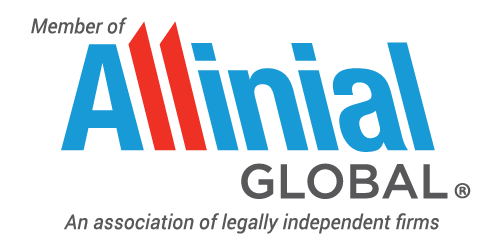Traveling for Business in 2024? What’s Deductible?
If you and your employees will be traveling for business this year, there are many factors to keep in mind. Under the tax law, certain requirements for out-of-town business travel within the United States must be met before you can claim a deduction. The rules apply if the business conducted reasonably requires an overnight stay.
Note: Under the Tax Cuts and Jobs Act, employees can’t deduct their unreimbursed travel expenses through 2025 on their own tax returns. That’s because unreimbursed employee business expenses are “miscellaneous itemized deductions” that aren’t deductible through 2025. Self-employed individuals can continue to deduct business expenses, including away-from-home travel expenses.
Rules That Come Into Play
The actual costs of travel (for example, plane fare and cabs to the airport) are generally deductible for out-of-town business trips. You’re also allowed to deduct the cost of lodging. And a percentage of your meals is deductible even if the meals aren’t connected to a business conversation or other business function. For 2024, the law allows a 50% deduction for business meals. No deduction is allowed for meal or lodging expenses that are “lavish or extravagant,” a term that generally means “unreasonable.” Also, personal entertainment costs on trips aren’t deductible, but business-related costs such as those for dry cleaning, phone calls and computer rentals can be written off.
Mixing Business With Pleasure
Some allocations may be required if the trip is a combined business/pleasure trip; for example, if you fly to a location for four days of business meetings and stay on for an additional three days of vacation. Only the costs of meals, lodging and so on incurred during the business days are deductible, not those incurred for the personal vacation days.
On the other hand, with respect to the cost of the travel itself (for example, plane fare), if the trip is primarily for business purposes, the travel cost can be deducted in its entirety and no allocation is required. Conversely, if the trip is primarily personal, none of the travel costs are deductible. An important factor in determining if the trip is primarily business or personal is the amount of time spent on each (though this isn’t the sole factor).
Suppose a trip isn’t for the actual conduct of business but is for the purpose of attending a convention or seminar. The IRS may check the nature of the meetings carefully to make sure they aren’t vacations in disguise, so retain all material helpful in establishing the business or professional nature of this travel.
Also, personal expenses you incur at home related to the trip aren’t deductible. This might include costs such as boarding a pet while you’re away.
Is Your Spouse Joining You?
The rules for deducting the costs of a spouse who accompanies you on a business trip are very restrictive. No deduction is allowed unless the spouse is an employee of yours or of your company. If that isn’t the case, then even if there’s a bona fide business purpose for having your spouse make the trip, you probably won’t be able to fully deduct his or her travel costs (though you can deduct some costs).
Specifically, the restrictions apply only to additional costs incurred by having your non-employee spouse travel with you. For example, the expense of a hotel room or for traveling by car would likely be fully deductible since the cost to rent the room or to travel alone or with another person would be the same, even in a rented car.
Before You Hit the Road
Contact the office with any questions you may have about travel deductions to help you stay in the right lane.
How to Secure a Tax Benefit with the QBI Deduction
QBI may sound like the name of a TV quiz show. But it’s actually the acronym for “qualified business income,” which can trigger a tax deduction for some small business owners or self-employed individuals. The QBI deduction was authorized by the Tax Cuts and Jobs Act (TCJA), and it took effect in 2018.
How It Works
The deduction is still available to owners of pass-through entities – such as S corporations, partnerships and limited liability companies – as well as self-employed individuals. But it is scheduled to expire after 2025 unless Congress acts to extend it.
The maximum deduction is equal to 20% of QBI. Generally, QBI refers to your net profit, excluding capital gains and losses, dividends and interest income, employee compensation and guaranteed payments to partners. The deduction can be claimed whether or not you itemize.
Notably, the QBI deduction is subject to a phaseout based on your income. If your total taxable income is below the lowest threshold, you may be entitled to the full 20% deduction, although other limitations do apply:
- For 2023, the thresholds are $182,100 for single filers and $364,200 for joint filers.
- For 2024, the thresholds are $191,950 for single filers and $383,900 for joint filers.
But things get tricky if your income exceeds the applicable threshold. In that case, your ability to claim the QBI deduction depends on the nature of your business.
Specifically, the rules are different for regular business owners of pass-through entities, sole proprietors and those who are in “specified service trades or businesses” (SSTBs). This covers most businesspeople who provide personal services to the public, such as physicians, attorneys, financial planners and accountants. (Engineers and architects are excluded.) Professionals in this group forfeit the QBI deduction entirely if income exceeds another set of limits:
- For 2023, these upper limits are $232,100 for single filers and $464,200 for joint filers.
- For 2024, these upper limits are $241,950 for single filers and $483,900 for joint filers.
If your income falls between the thresholds stated above, your QBI deduction may be reduced, regardless of whether you’re in an SSTB or not. For taxpayers who are in SSTBs, the deduction is phased out until it disappears at the upper income threshold. For other taxpayers, the deduction is limited to the lesser of 20% of QBI or the greater of 1) 50% of the wages paid to employees on W-2s, or 2) 25% of wages plus 2.5% of the unadjusted basis of the qualified property owned by the business.
Available for a Limited Time
The QBI deduction provides a valuable tax break for small business owners, so if it expires, their taxes are likely to go up. It’s unclear at this time what the chance is of the deduction being extended. Contact the office for guidance in determining the best strategy for your personal situation.
Tracking Down Donation Substantiation
If you’re like many Americans, your mailbox may have been filling up in recent weeks with letters from your favorite charities acknowledging your 2023 donations. But what happens if you haven’t received such a letter for a contribution? Can you still claim a deduction on your 2023 income tax return for the gift? It depends.
What’s Required
To support a charitable deduction, you need to comply with IRS substantiation requirements. This generally includes obtaining a contemporaneous written acknowledgment from the charity stating the amount of the donation if it’s cash. If the donation is property, the acknowledgment must describe the property, but the charity isn’t required to provide a value. The donor must determine the property’s value.
“Contemporaneous” means the earlier of the date you file your tax return or the extended due date of your return. So, if you donated in 2023 but haven’t yet received substantiation from the charity, it’s not too late, as long as you haven’t filed your 2023 return. Contact the charity and request a written acknowledgment.
Keep in mind that, if you made a cash gift of under $250 with a check or credit card, generally a canceled check, bank statement or credit card statement is sufficient to support your donation. However, if you received something in return for the donation, you generally must reduce your deduction by its value and the charity is required to provide you a written acknowledgment as described earlier, listing the value of the item you received.
Itemized Deductions or Standard?
You may remember that in recent tax years (2020 and 2021) there was a special provision of tax law that allowed taxpayers who take the standard deduction on their tax returns to claim a limited deduction.
Many people don’t realize that this provision wasn’t reauthorized for subsequent years. Since the tax break has expired, it’s no longer available to nonitemizers. So, to deduct your charitable donations, you must opt to itemize deductions on your tax return, rather than taking the standard deduction.
Ask Questions
If you aren’t sure about some of your donations, contact the office for answers to your questions and help determining whether you have sufficient substantiation for the donations you hope to deduct on your 2023 return. It’s also important to have the substantiation you’ll need for charitable gifts you’re planning this year to ensure you can enjoy the desired deductions when you file your 2024 tax return.
There May Still Be Time to Lower Your 2023 Tax Bill
If you’re preparing to file your 2023 tax return, you may still be able to lower your tax bill – or increase your refund. If you qualify, you can make a deductible contribution to a traditional IRA right up until the original filing deadline, April 15, 2024, and see tax savings on your 2023 return.
For eligible taxpayers, the 2023 contribution limit has increased to $6,500, or $7,500 for taxpayers aged 50 and up on Dec. 31, 2023. If you’re a small business owner, you can establish and contribute to a Simplified Employee Pension (SEP) plan up to the extended due date of your return. The maximum SEP contribution you can make for 2023 is $66,000.
What determines eligibility? To make a fully deductible contribution to a traditional IRA, you (and your spouse, if you’re married) must not be active participants in an employer-sponsored retirement plan or, if you are, your 2023 modified adjusted gross income (MAGI) must not exceed the applicable limits:
- For single taxpayers covered by a workplace plan, $73,000 (partial deduction available up to $83,000 MAGI).
- For a married couple filing jointly, where the spouse making IRA contributions is covered by a workplace plan, $116,000 (partial deduction available up to $136,000 MAGI).
- If the spouse making the IRA contributions isn’t covered by a workplace plan but his or her spouse is, $218,000 (partial deduction available up to $228,000 MAGI).
For married couples filing separately, where at least one spouse is covered by a workplace plan, the ability to deduct IRA contributions is extremely limited.
Contact the office if you want more information about this important topic to help you save the maximum tax-advantaged amount for retirement.
Deductions vs. Credits: What’s the Difference?
One of the most common misunderstandings about filing an income tax return is the difference between deductions and credits. Deductions reduce the amount of a taxpayer’s income before tax is calculated. For example, on your individual return, you can either take the standard deduction or itemize deductions, if it will reduce your taxable income more. Credits, on the other hand, reduce the actual tax due, dollar-for-dollar, generally making them more valuable than deductions.
For example, the tax savings from a $1,000 deduction would depend on your tax bracket; it would save you $150 if you’re in the 15% tax bracket but it would save you $350 if you’re in the 35% tax bracket. A $1,000 credit, on the other hand would save you $1,000 in taxes regardless of your tax bracket. (These examples assume no income-based phaseout or limit applies to the deduction or credit.)
Some credits, such as the Child Tax Credit, are partially or fully refundable. This means that if a taxpayer’s tax liability is less than the amount of the credit, the taxpayer can possibly receive the difference as a refund.
ERC Voluntary Disclosure Program Available for a Limited Time
As part of an ongoing initiative to combat questionable Employee Retention Credit (ERC) claims, the IRS has launched a voluntary disclosure program. It allows eligible businesses to pay back money they received after filing ERC claims in error.
The disclosure program runs through March 22, 2024, and requires only 80% of the claim received to be repaid. It’s part of a larger IRS effort to stop aggressive marketing around the ERC that misled some employers into filing claims they were ineligible for.
The IRS has another program that allows employers to withdraw pending ERC claims with no interest or penalty. More than $100 million in withdrawals has already been received.
Customers Paying Late? Consider Finance Charges
Now that we’re past the holidays and you’ve had January to catch up on the December work that didn’t get done, how’s your financial workflow? Are you caught up on bills and invoices?
You may be, but your customers might not be. You can find out by creating an Open Invoices report (Reports | Customers & Receivables) and looking in the Aging column to see how many days invoices are past due.
Some ways you can encourage your customers to pay faster include:
- Allowing them to pay using credit cards and bank transfers,
- Sending invoices immediately after a sale, and
- Offering a premium for paying bills on time 12 months in a row, like a discount on future sales.
There’s another tool in your QuickBooks toolbox: finance charges.
Laying the Groundwork for Finance Charges
Before you can start charging customers late fees, you have some setup work to do. Open the Edit menu and select Preferences. Scroll down and click Finance Charges, then Company Preferences.

There are several questions you’ll have to answer, including:
- What will you charge as an annual interest rate?
- What will your minimum finance charge be?
- How long will the grace period be? How many days can pass before the finance charges kick in? 15-21 days is typical.
- When you collect interest on past-due payments, where should the funds go? In the above example, we’ve selected Other Income.
- Do you plan to assess finance charges on overdue finance charges? You’ll need to find out what your local laws are. In some jurisdictions, you’re limited on what interest you can charge on overdue finance charges.
- Will you calculate charges from the due date or invoice/billed date? When do you want QuickBooks to consider that a payment is past due and eligible for finance charges?
How Are Finance Charges Billed?
You may be accustomed to seeing finance charges included on a bill. QuickBooks doesn’t work this way. You’ll have to print separate invoices for finance charges alone. If you want to use this option, check the box in front of Mark finance charge invoices “To be printed.” If you leave that box blank, finance charges will appear on each customer’s next statement. So if you don’t send statements on a regular basis, it’s best to let the charges be printed separately. Click OK when you’re done with this window.
Not sure when statements should be sent or how to create them in QuickBooks? Contact the office for guidance.
How Do You Assess Finance Charges?
When you’re ready to see who owes interest on late payments, open the Customers menu and click Assess Finance Charges. QuickBooks will open a window like the one pictured below. Be sure the date showing at the top is the actual Assessment Date, which may or may not be the current date. Create a checkmark in the first column in front of all the customers who should receive finance charges.

Two buttons at the bottom of this window open the Settings page from QuickBooks’ Preferences and the Collection History for individual customers. As you did before, check the box in front of Mark invoices “To be printed” if you want QuickBooks to print individual invoices for these finance charges. When you’re ready, click Assess Charges.
If you’re going to allow the charges to be included in the customers’ next statements, you don’t have to do anything else for now. But if you want to print the finance charge invoices, open the File menu and click Print Forms | Invoices. The window that opens will display any invoices you have specified “To be printed.” In the number (NO) column, any entry that begins with FC is a finance charge invoice. Put a checkmark in front of any invoice that you want to print, then click OK.

Warn Your Customers
Be sure you notify your customers in advance if you plan to start assessing finance charges. Don’t just drop a note in the customer message field. Send an email, or print and send a document, that spells out the terms and conditions, the amount of interest that will be charged, and the grace period. Remember to check with the appropriate jurisdiction to make sure you understand the laws before you begin.
As mentioned earlier, there are many ways you can encourage customers to pay faster, and finance charges may not be the best fit for your company. But if you’d like to get them set-up in QuickBooks, don’t hesitate to contact the office for help.
Upcoming Tax Due Dates
February 15
Individuals: File a new Form W-4 to continue exemption for another year if you claimed exemption from federal income tax withholding in 2023.Businesses: Provide Form 1099-B, 1099-S and certain Forms 1099-MISC (those in which payments in Box 8 or Box 10 are being reported) to recipients.Employers: Deposit Social Security, Medicare and withheld income taxes for January if the monthly deposit rule applies.Employers: Deposit nonpayroll withheld income tax for January if the monthly deposit rule applies.
February 28
Businesses: File Form 1098, Form 1099 (other than those with a January 31 deadline), Form W-2G and transmittal Form 1096 for interest, dividends and miscellaneous payments made during 2023. (Electronic filers can defer filing to April 1.)
March 11
Individuals: Report February tip income of $20 or more to employers (Form 4070).
Any accounting, business or tax advice contained in this communication, including attachments and enclosures, is not intended as a thorough, in-depth analysis of specific issues, nor a substitute for a formal opinion, nor is it sufficient to avoid tax-related penalties. If desired, we would be pleased to perform the requisite research and provide you with a detailed written analysis. Such an engagement may be the subject of a separate engagement letter that would define the scope and limits of the desired consultation services.


















